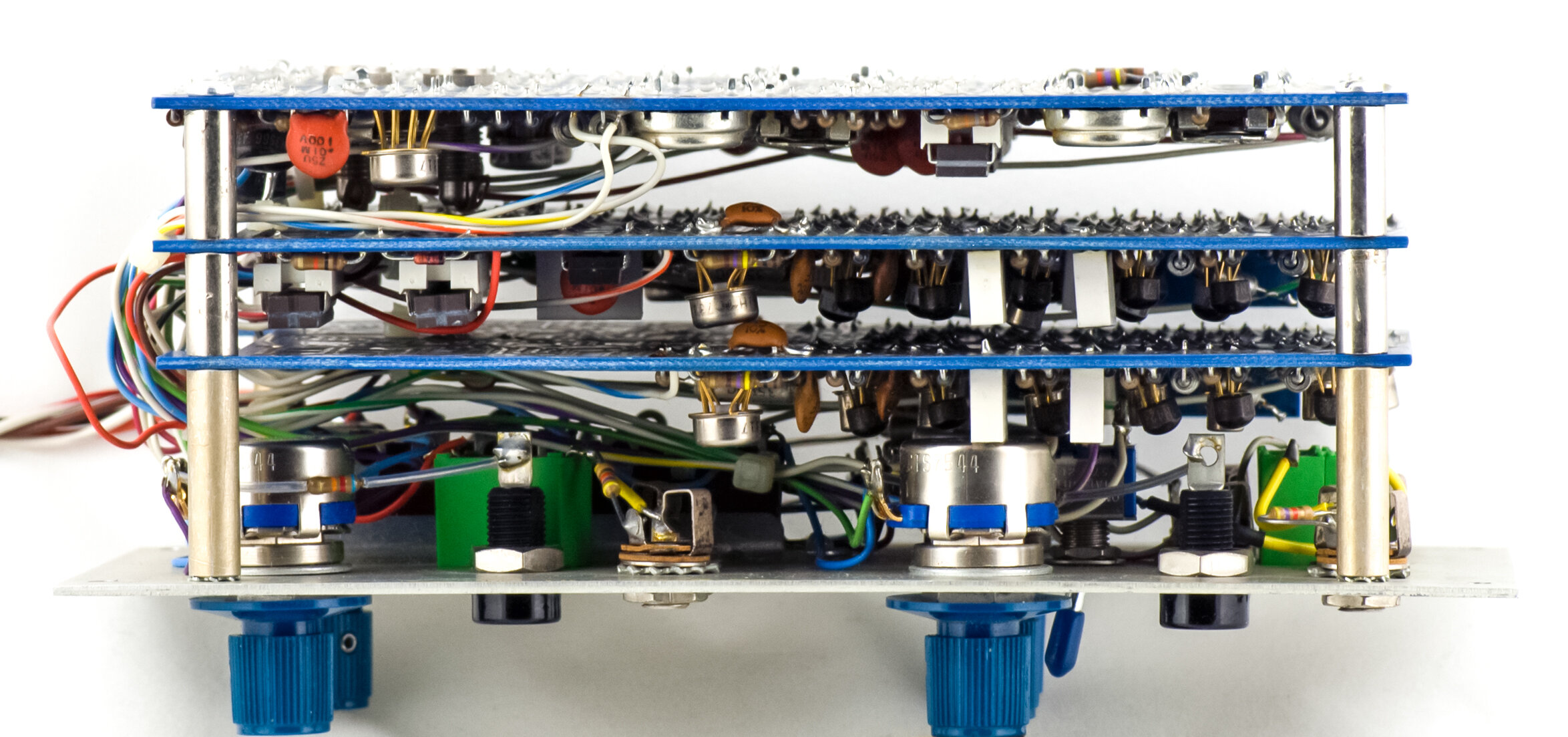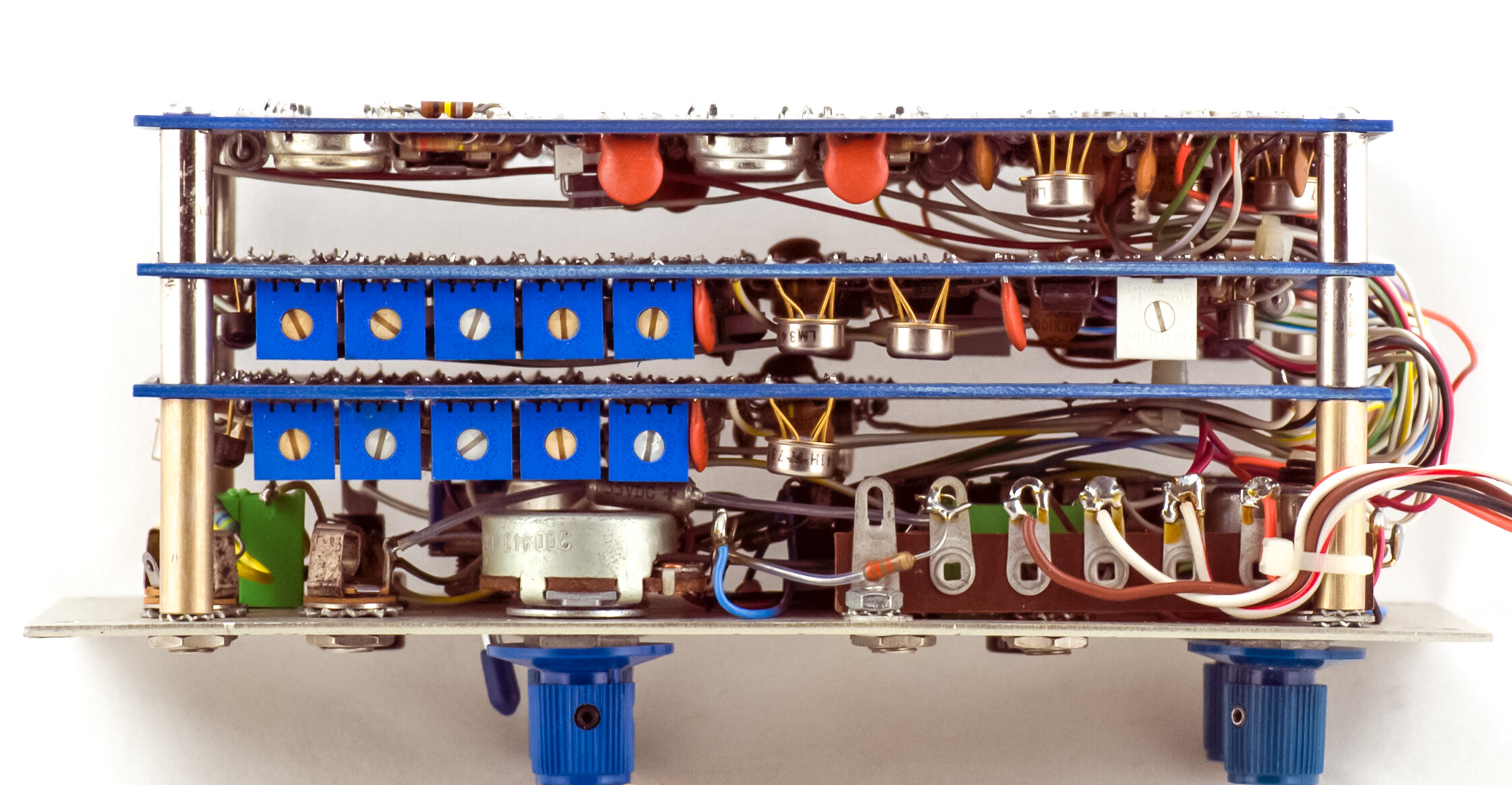FREQUENCY SHIFTER MODEL 285
285 Panel artwork, image courtesy of Dave Brown at Modular Synthesis
Frequency shifters are incredible tools in modular composition. Even with subtle application, very complex timbres can be created to add momentum to even the most simplistic sequences or drones.
The two sections of this module, the Frequency Shifter and Balanced Modulator, make up some of the oldest and most experimental audio synthesis techniques ever used, hearkening back to the days where the only way to get these features were to use old test equipment.
Based on panel real estate alone, the 200 Series Frequency Shifter is incredibly dense when compared to the original 185. The 185 gives no control over the reference input (or any control at all).
Buchla Series 200 Catalogue description for the 285
The 285 is one large sandwich of three circuit boards. Two boards contain the tuned Dome filters, and the third board contains mixing circuitry for the Balanced Modulator and the reference oscillator. Photos included of the Frequency Shifter sandwich were sent to us from Dave Brown at Modular Synthesis.
The bottom section of the panel is where the controls lie for the Balanced Modulator. Ring Modulation is one of the oldest methods of sound manipulation around. it was originally from the 1930s, utilized to multiplex and divide multiple frequencies so they can all share the same line on early telephone systems. It truly is fascinating how many happy accidents occurred from these technological advancements, electronic music would be completely different without them.
From the rear of this unit, it becomes apparent that this is not a module you want to learn how to calibrate on. In addition to the 11 trimmers on the side of the module, there are 14 on the rear of the third PCB.
Phase Shifter patent by Robert B. Dome, European Patent Office #CA490405
WHAT’S A DOME FILTER?
One might wish that the Dome filter is named for some scientific or geometric representation of the filtered waveform, or that it is hidden behind some romanticized mathematical trickery, but it’s really quite simple. The inventor of the phase shifting Dome Filter is named… Robert B. Dome. Are you underwhelmed? I originally was too.
a Dome filter is a series of two all-pass filter networks. When run in parallel, they create a set of sine and cosine waveforms that are shifted +/-90 degrees out of phase of the input signal.
This network of phase shifters is what causes the output frequencies to shift in the direction of the Reference oscillator. If the reference is set to internal, you can dial in a frequency. Things become more interesting when you input a frequency that is constantly changing, creating very complex bell tones and other morphing sounds that are not possible with FM or AM modulation alone.
285 REPLICATION
M.E.M.S. Tracing of 285-1 and 285-2. Two 285-2 boards are needed to complete the module.







